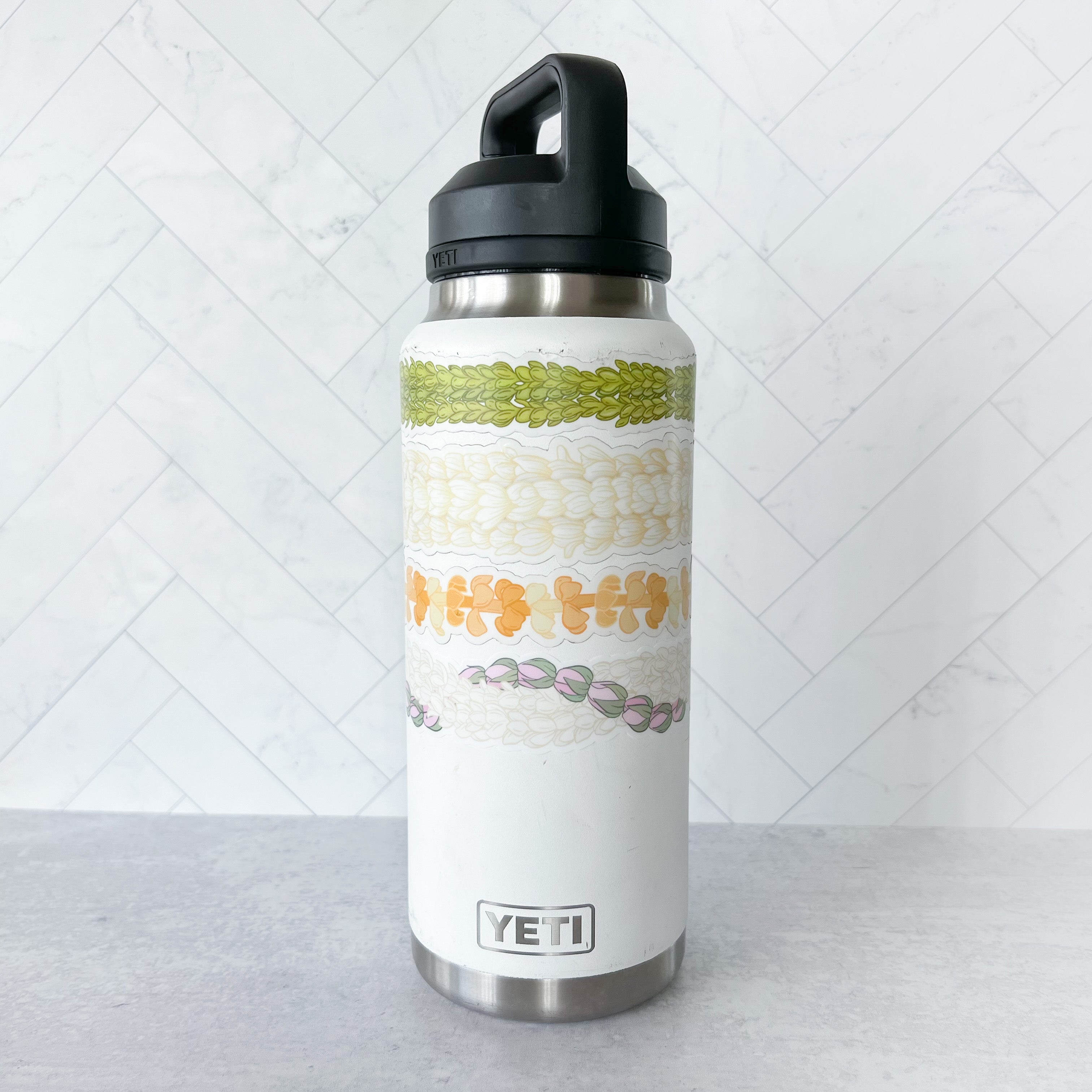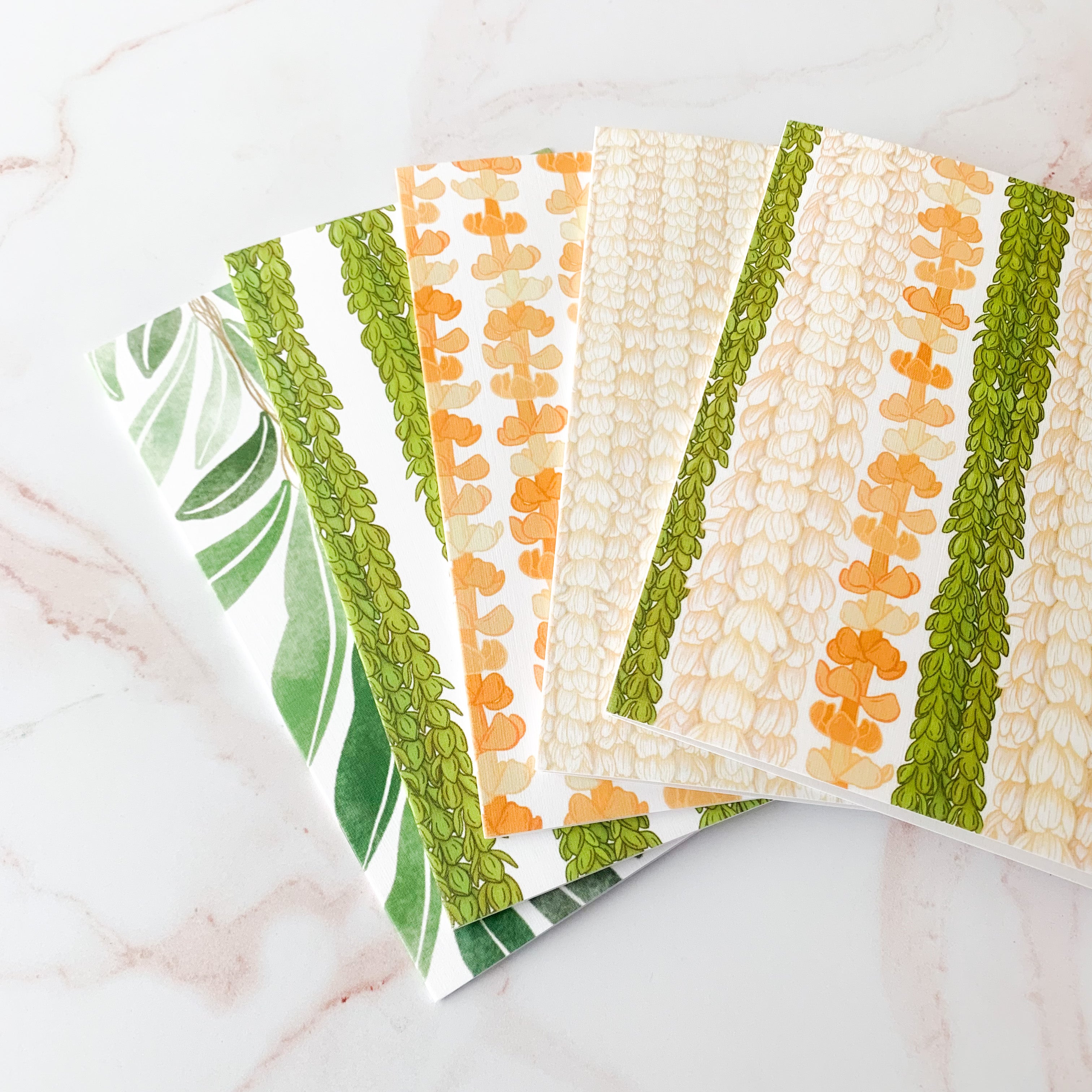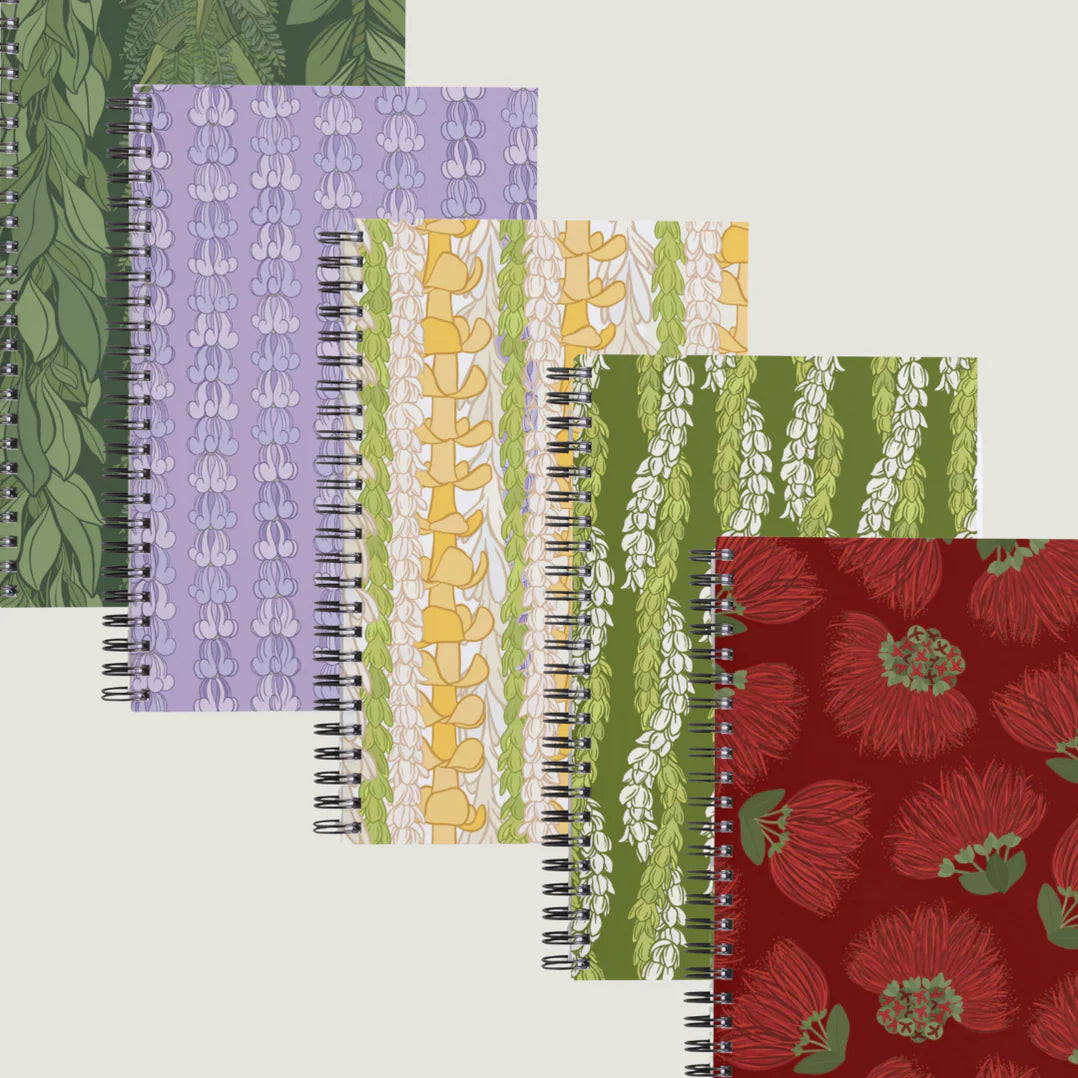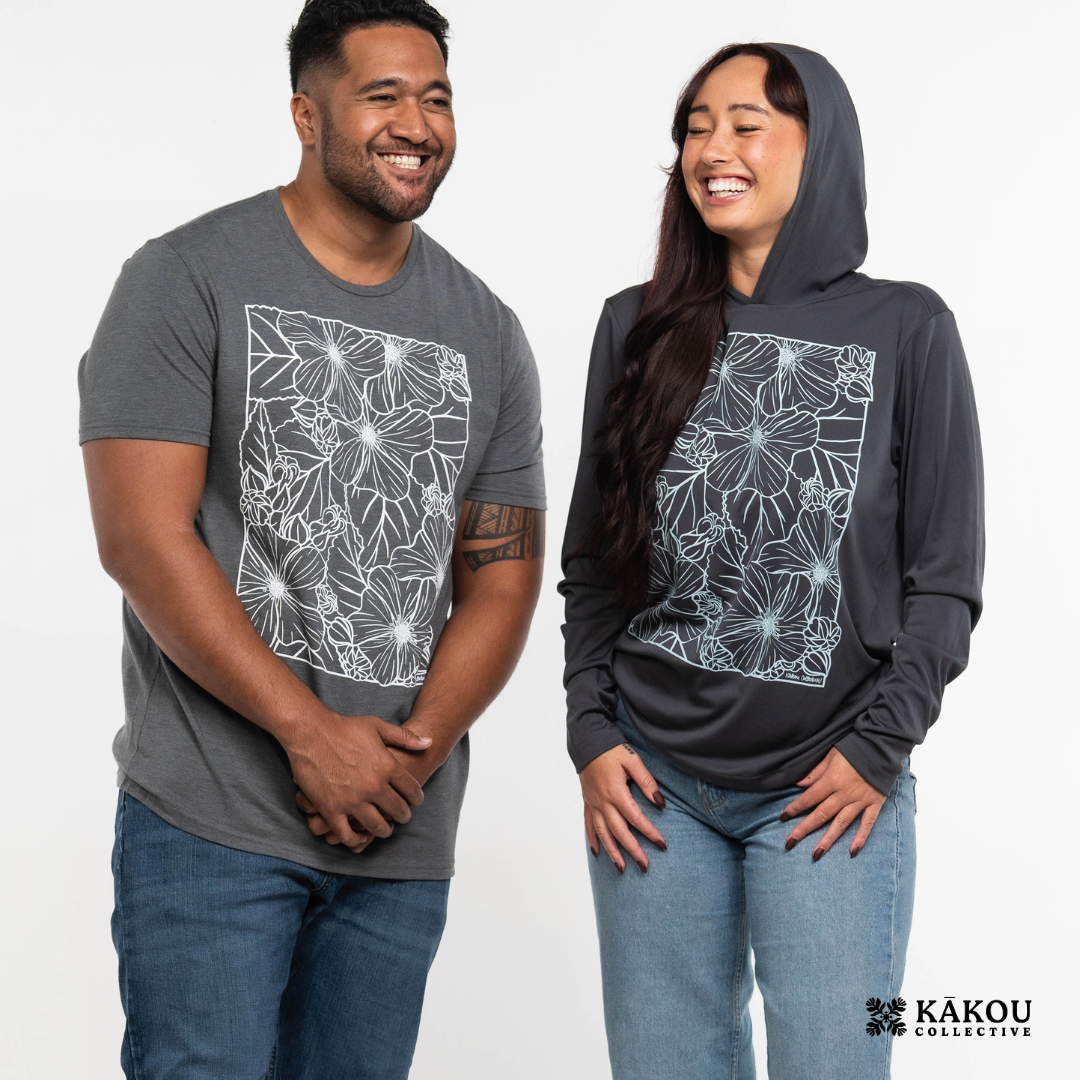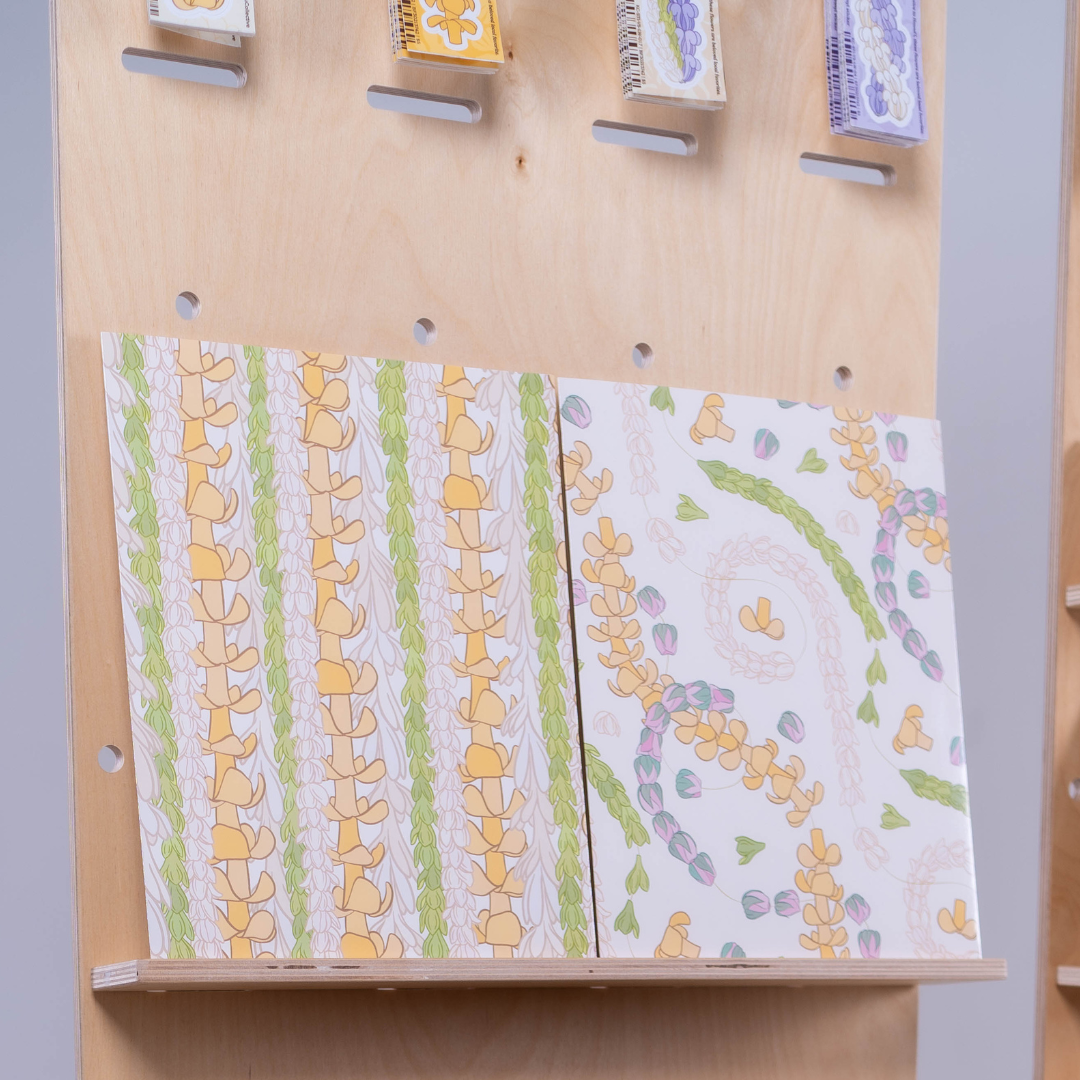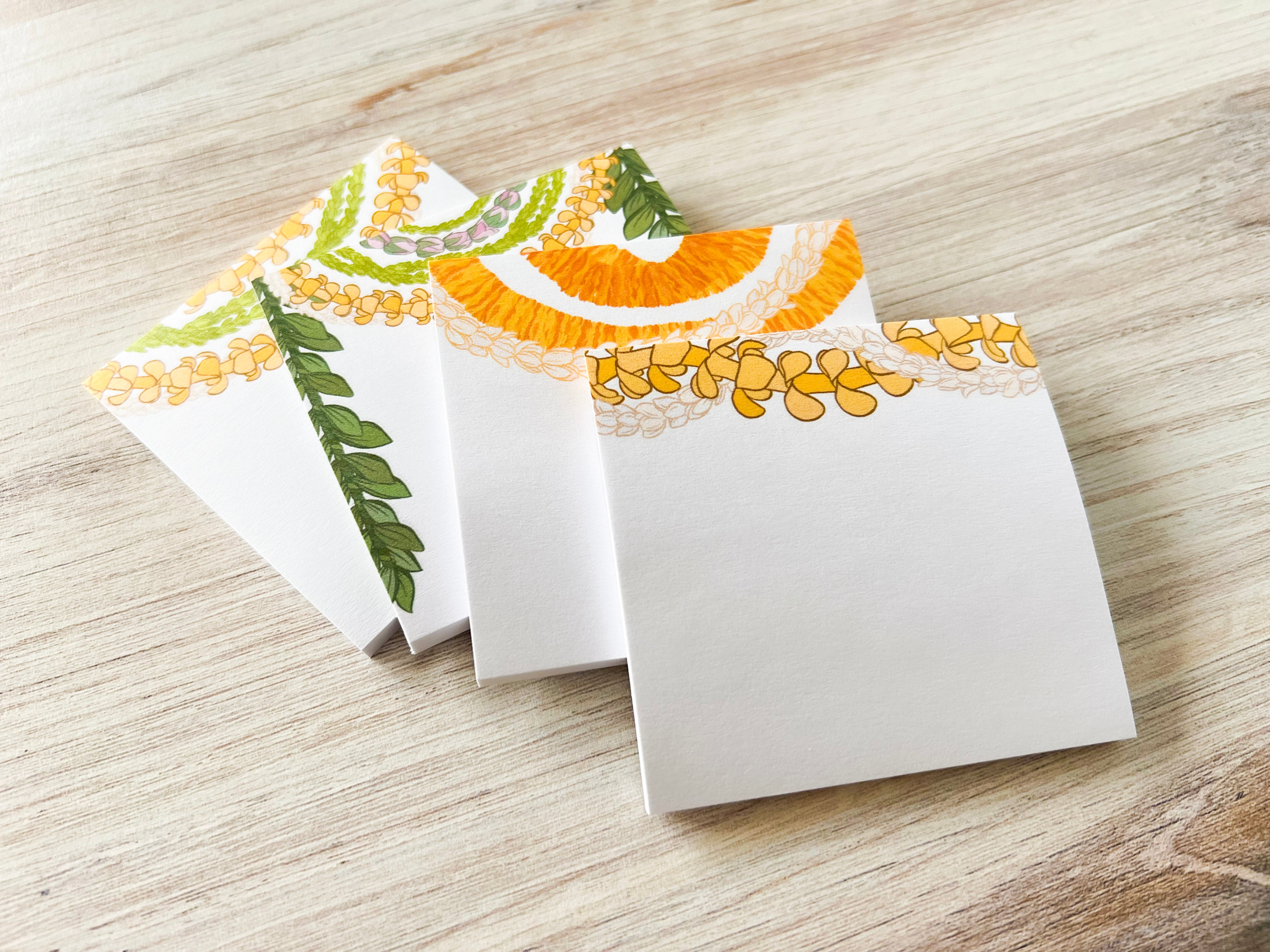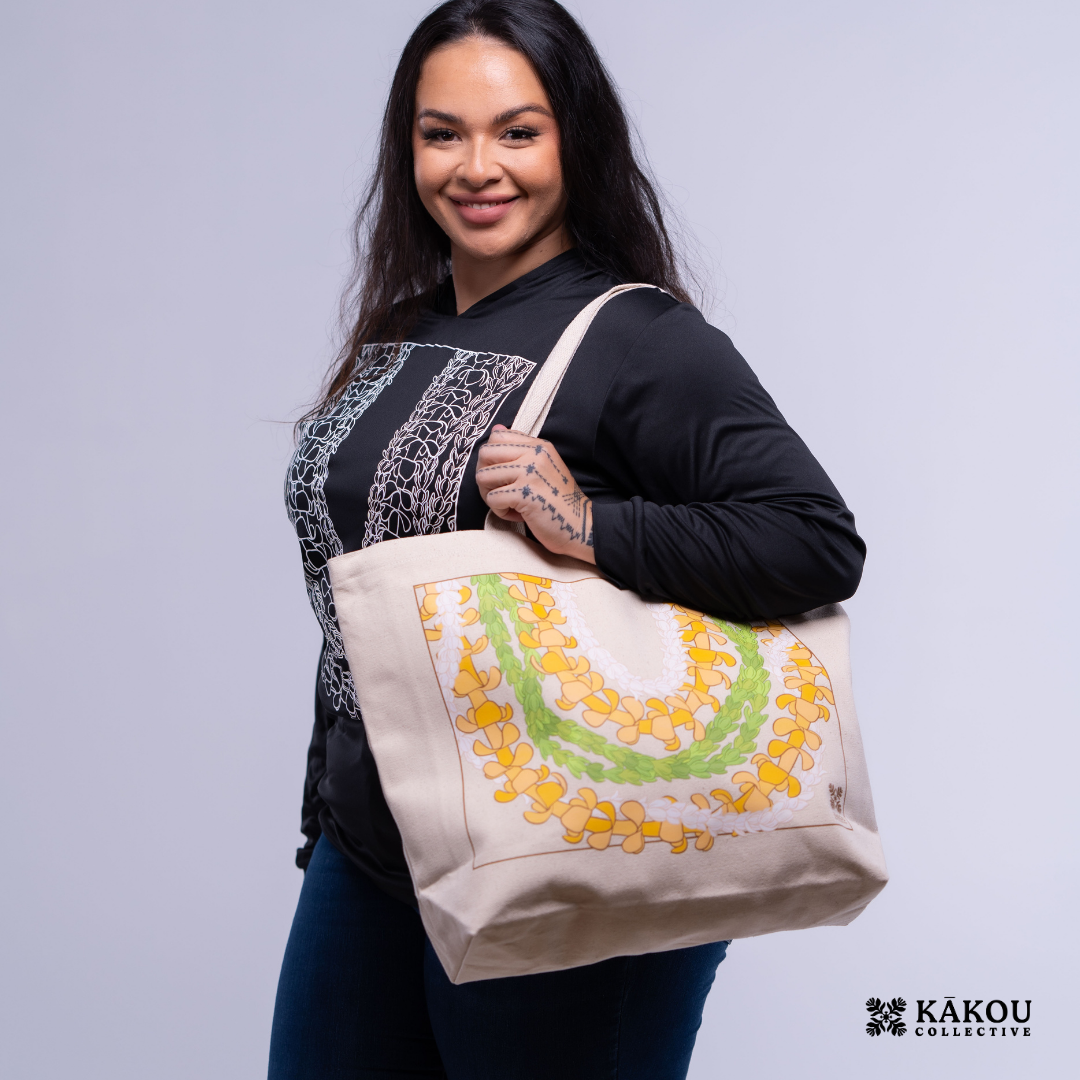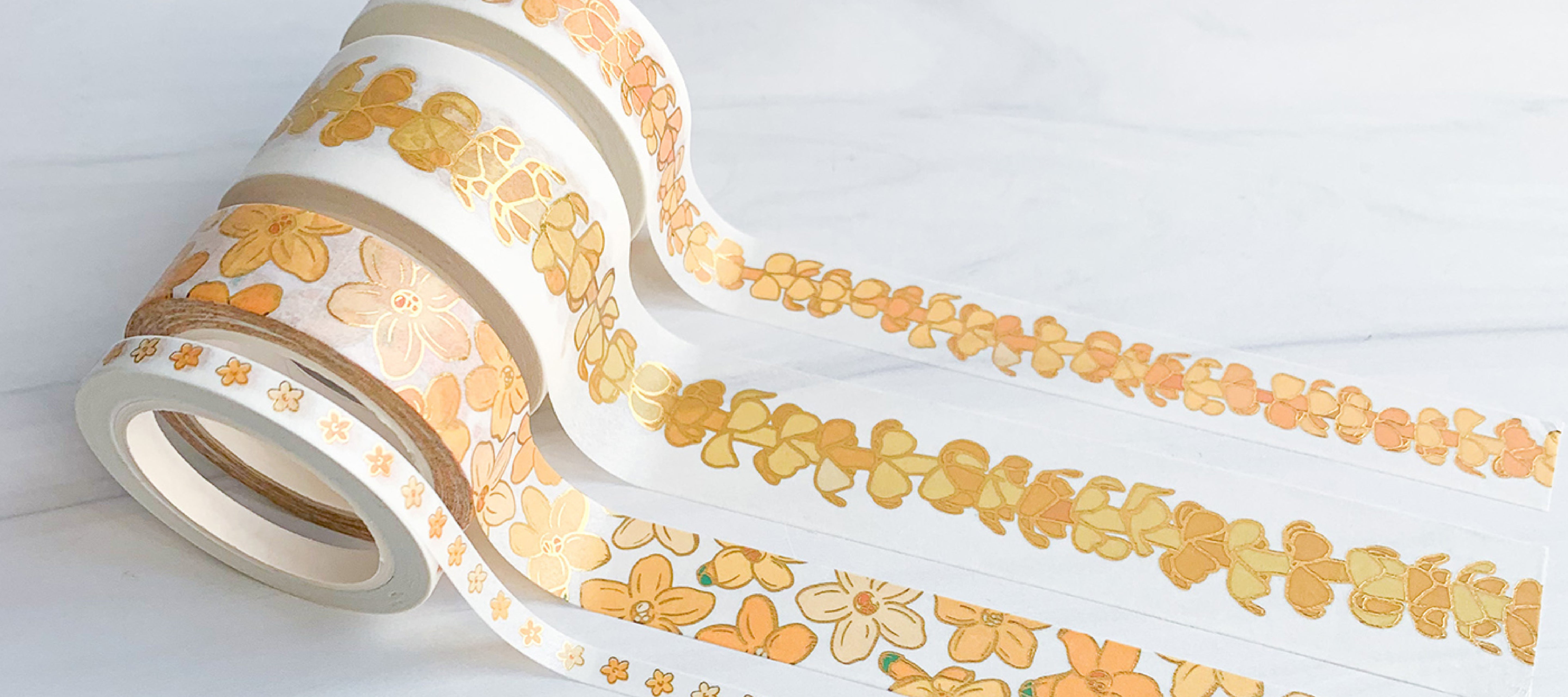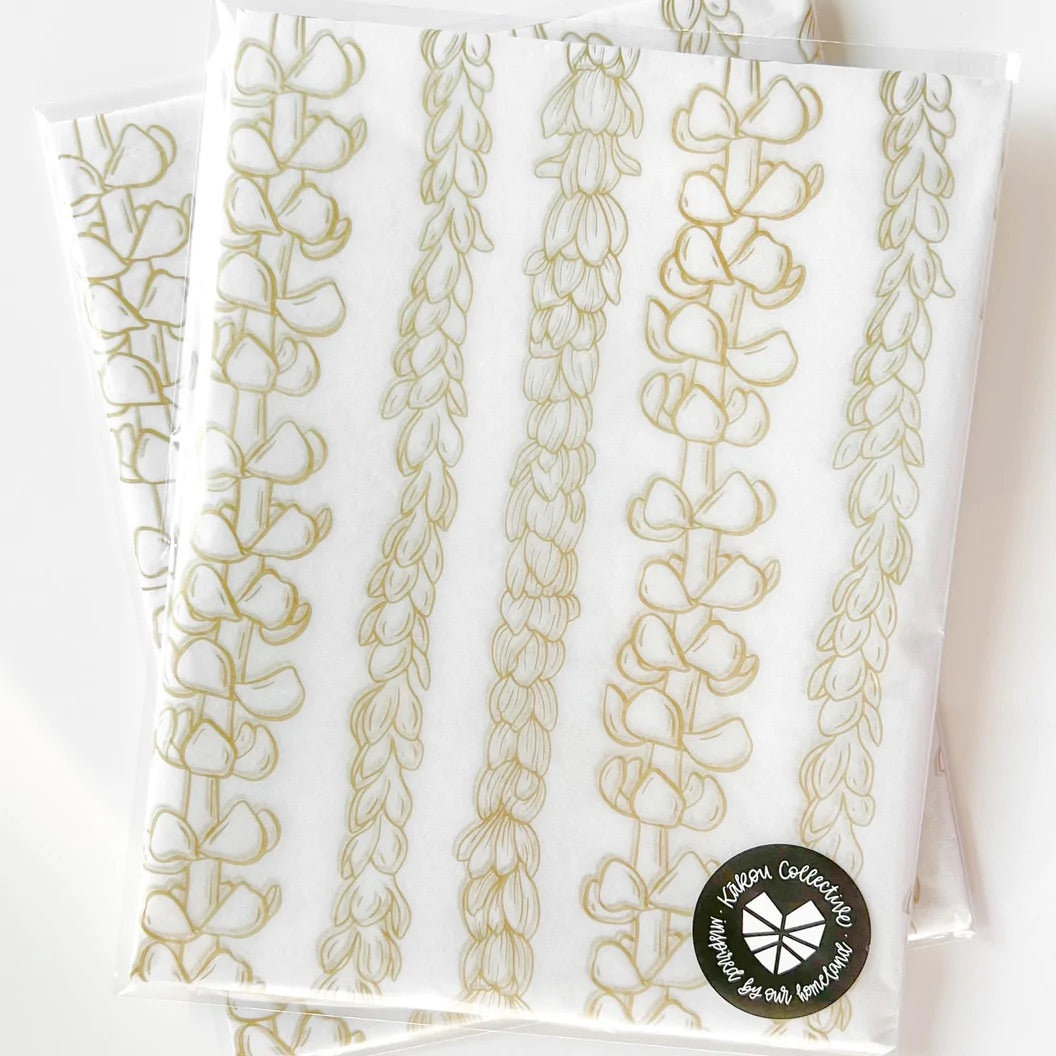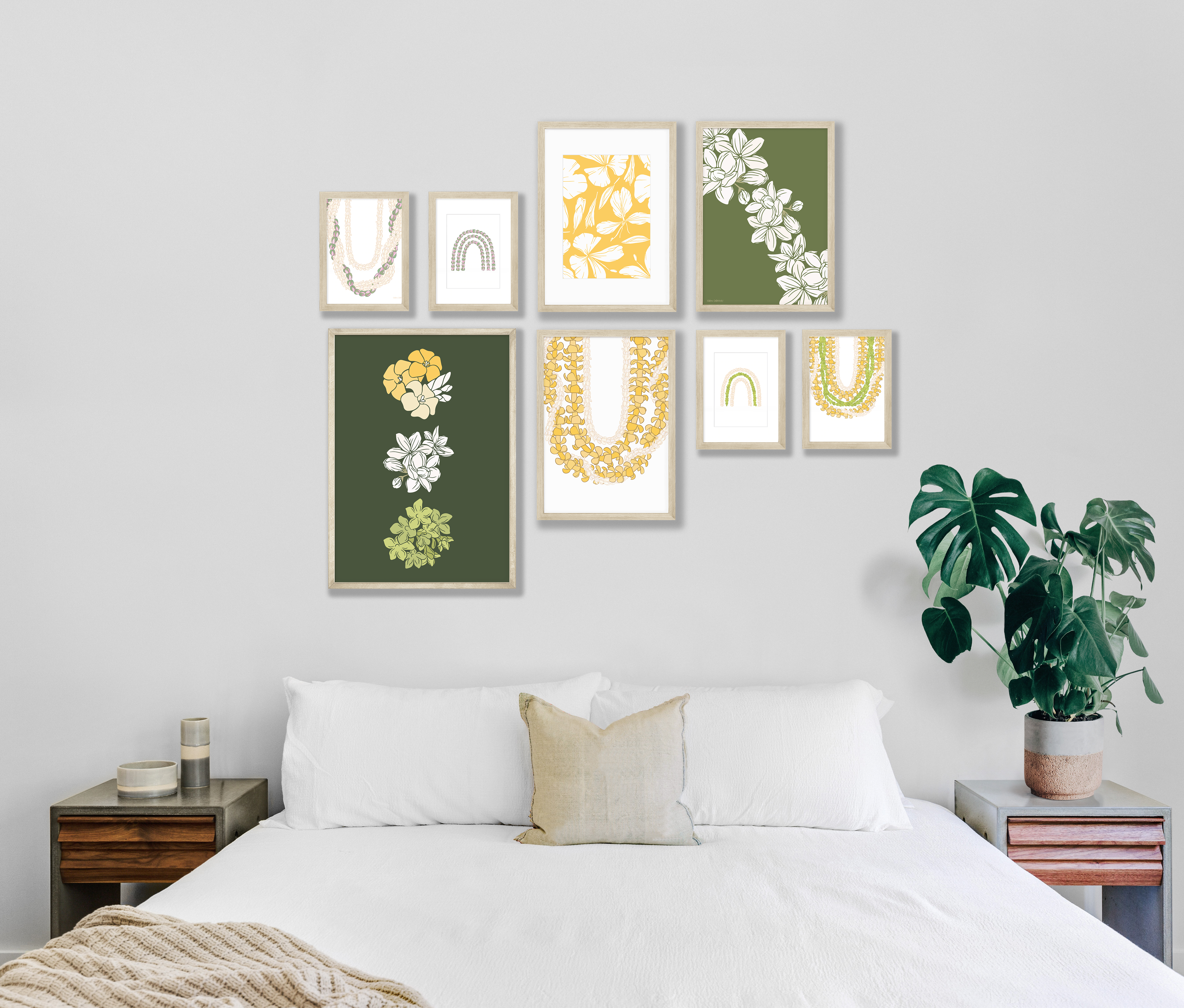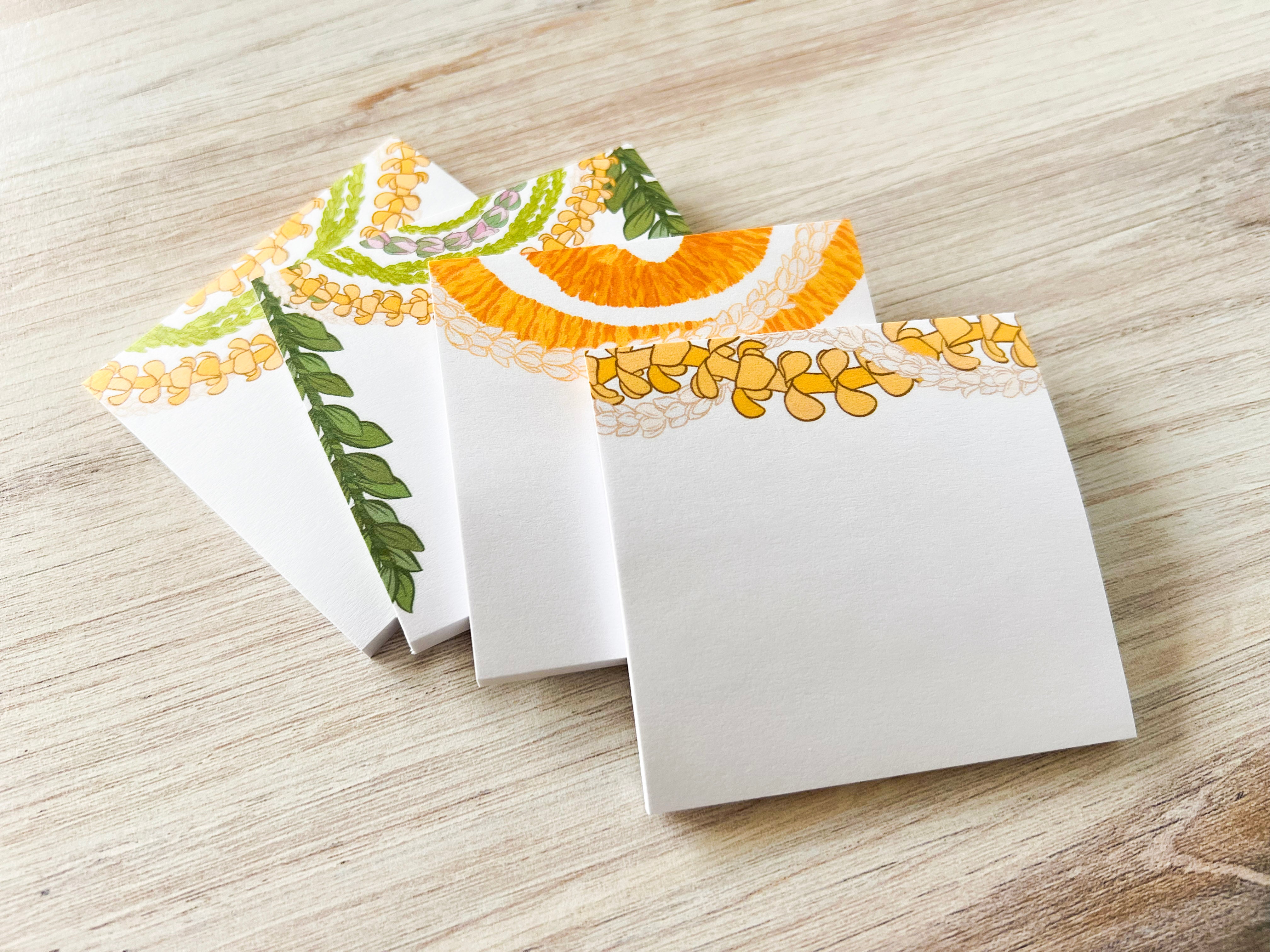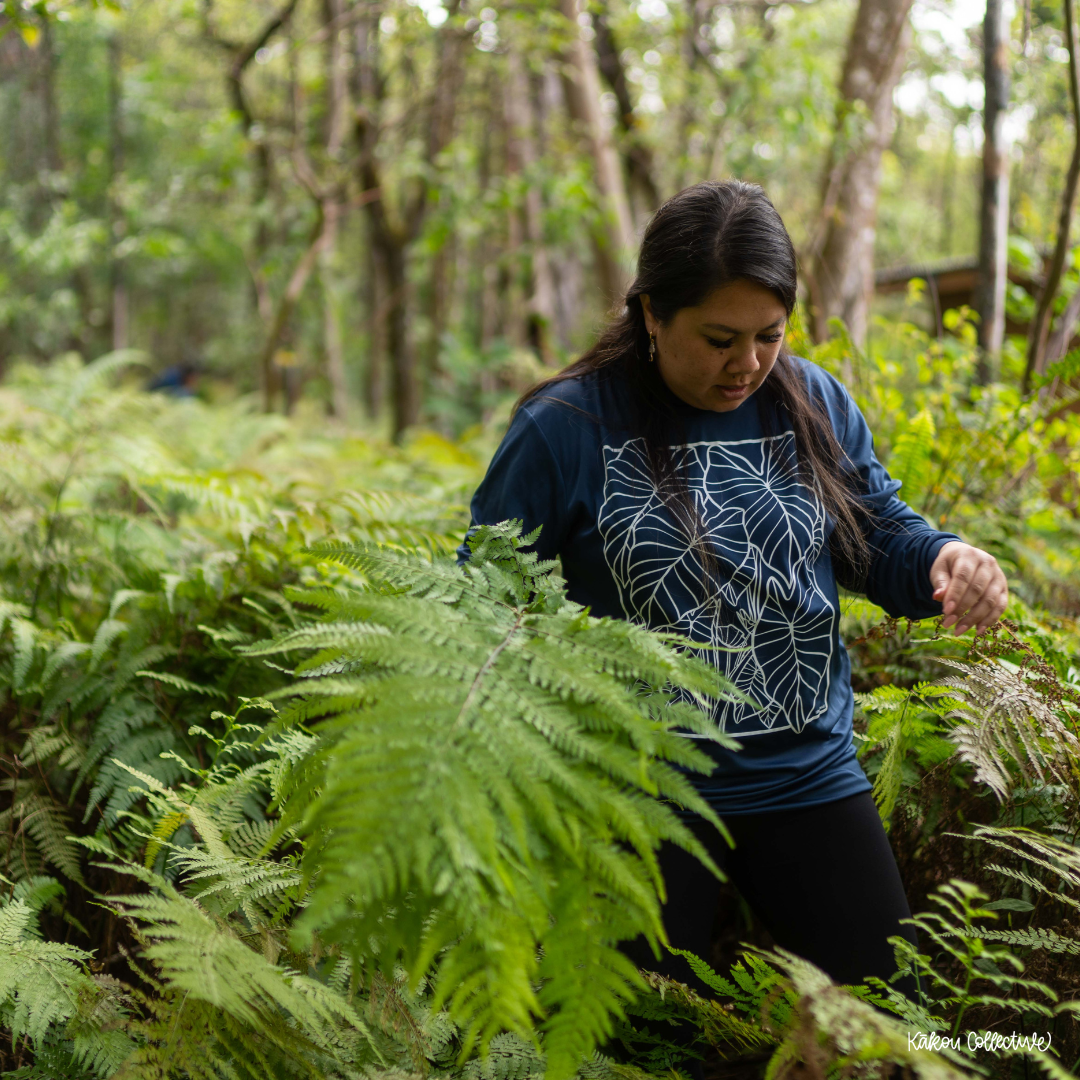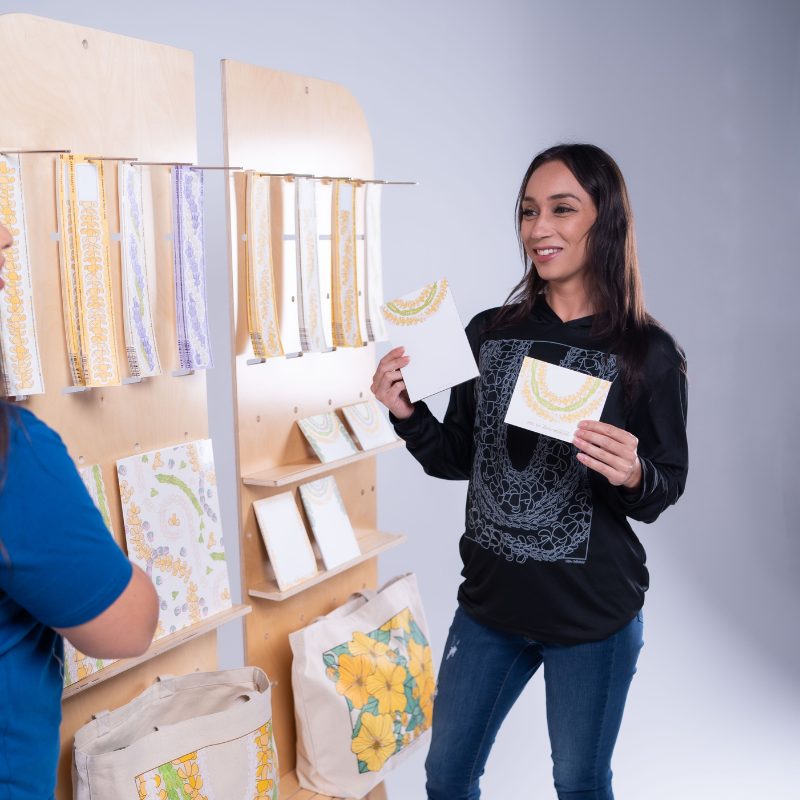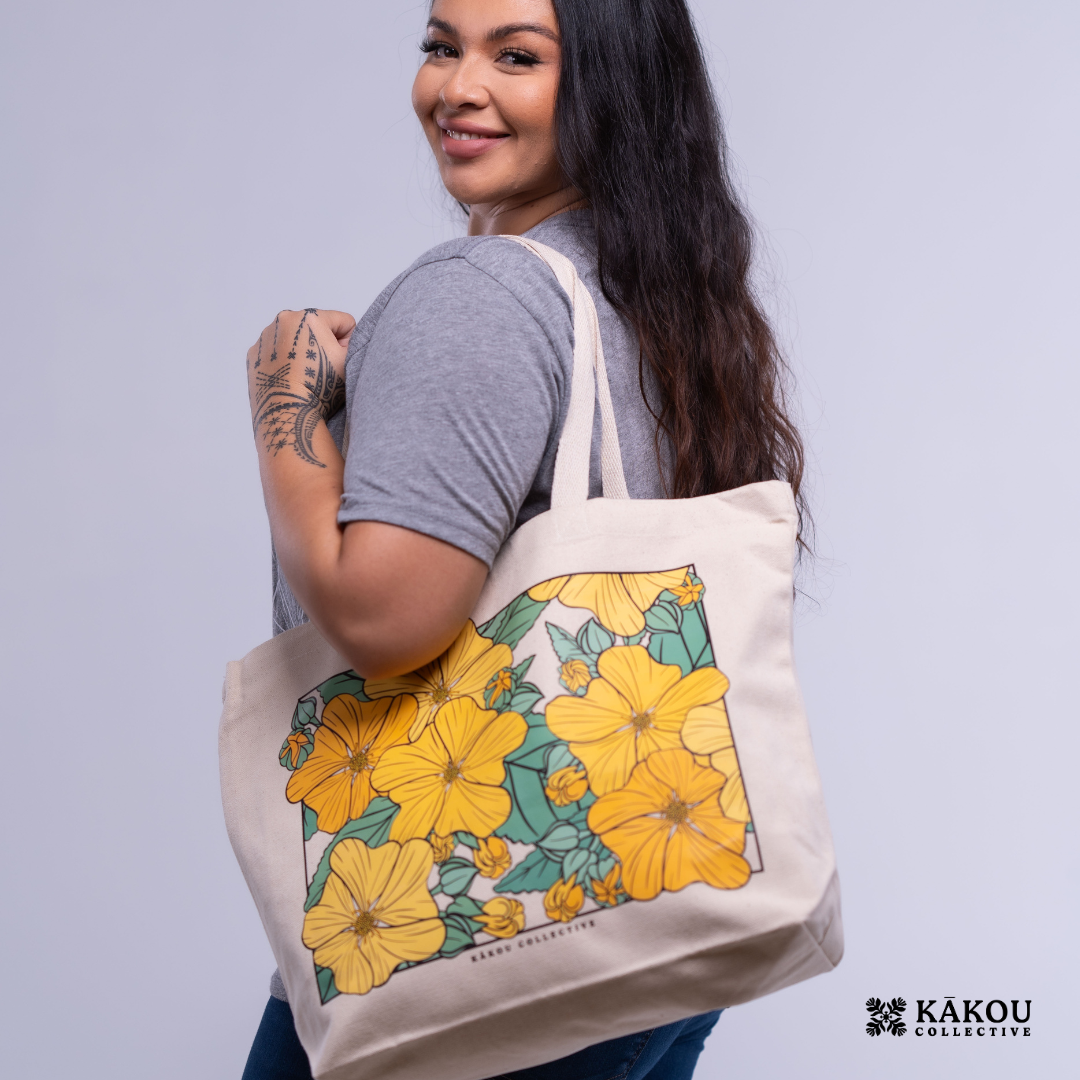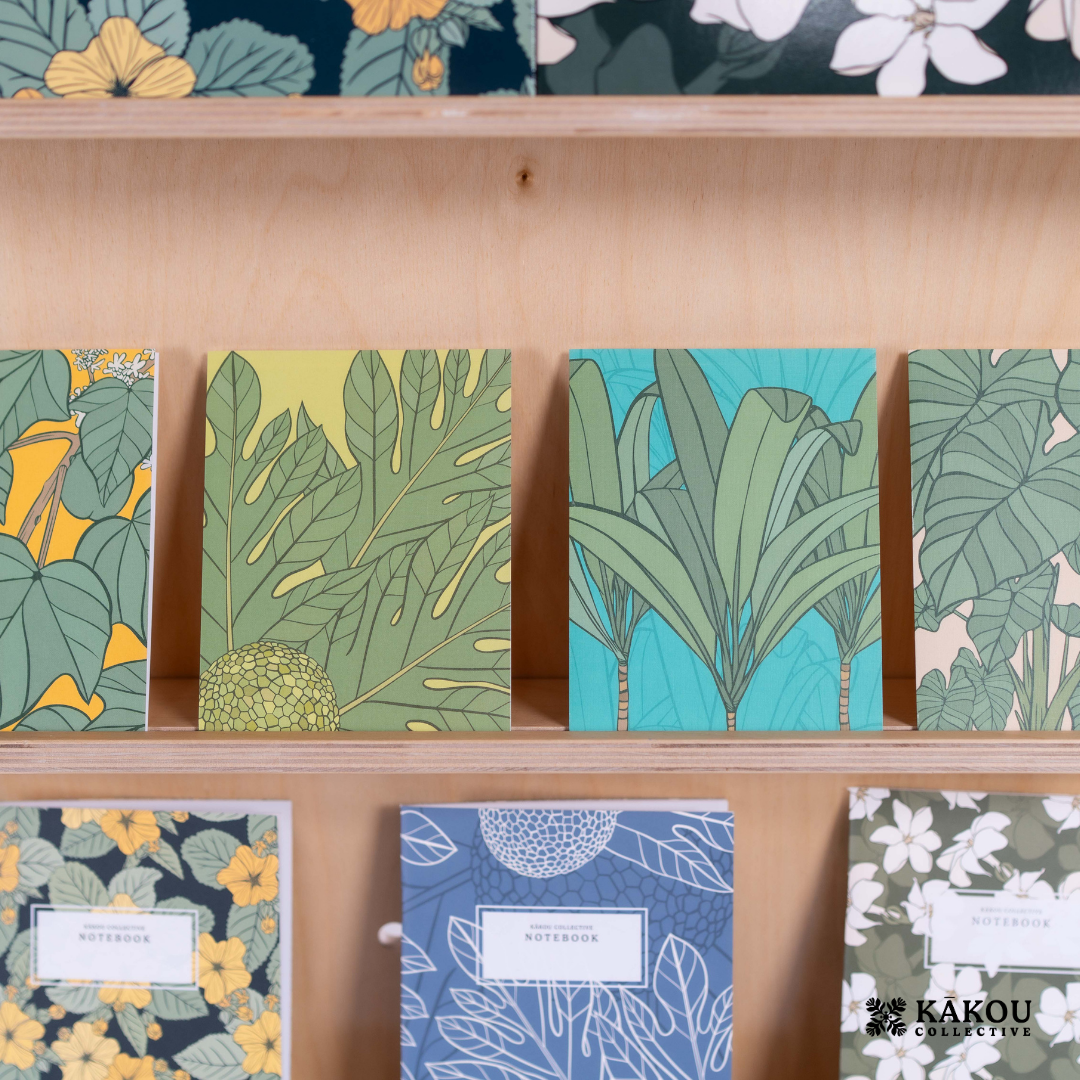Thrive Where You Are Planted — Native Beach Flowers of Hawaiʻi
In 2016, my curiosity for Hawaiʻi’s native plants began with my very first workshops—what started as a simple interest quickly became a lifelong source of inspiration. This latest artwork celebrates nine native beach plants that have taught me lessons in beauty, adaptation, and strength. Two products—a list pad and a matching sticker sheet—carry one of my favorite reminders: “Thrive where you are planted.”
In that spirit, let’s explore each flower’s scientific name, cultural significance, and the stories they carry.
Naupaka Kahakai (Scaevola taccada)
With its distinctive half-flowers, Naupaka kahakai is one of Hawaiʻi’s most recognized coastal plants. Its waxy green leaves and salt-tolerant nature make it a vital shoreline protector, stabilizing sand dunes and preventing erosion. Culturally, it’s tied to the moʻolelo of Princess Naupaka and her love Kaui—two halves separated, one in the mountains and one by the sea, yet forever connected. It’s a reminder that love and connection endure despite distance.
ʻIlima (Sida fallax)
The golden-orange blossom of ʻilima is the official flower of Oʻahu and a cherished lei flower, often called the “royal lei” for its historical connection to aliʻi. It can take hundreds to over a thousand tiny, delicate blossoms to create a single lei, making each one an act of patience and love. Medicinally, ʻilima was used in lāʻau lapaʻau (traditional Hawaiian medicine), and spiritually, it’s connected to Laka, goddess of hula.
Pōhinahina (Vitex rotundifolia)
With silvery-green leaves and clusters of soft lavender flowers, pōhinahina brings a soothing beauty to the shoreline. Its name hints at its pale, “hina” (grey) foliage, which shimmers in the sunlight. Pōhinahina is both ornamental and medicinal, valued for its ability to withstand salt spray and wind, thriving where other plants cannot.
Pā‘ū o Hi‘iaka (Jacquemontia ovalifolia subsp. sandwicensis)
This delicate vine, with its light blue to lavender blooms, is named after the “skirt” (pā‘ū) of the goddess Hiʻiaka, sister of Pele. In moʻolelo, Hiʻiaka’s pā‘ū protected her as she journeyed across the islands, symbolizing care, resilience, and devotion. Pā‘ū o Hi‘iaka helps stabilize coastal sand, protecting the ecosystems it calls home.
Hau (Hibiscus tiliaceus)
A fast-growing coastal tree, hau produces large yellow hibiscus flowers that turn orange and red as they age. Its flexible branches were traditionally used for canoe outriggers, fish traps, and cordage, while its flowers and leaves were valued medicinally. Hau thrives along shorelines, its roots helping to prevent erosion and provide shade.
ʻŪlei (Osteomeles anthyllidifolia)
A sprawling shrub or vine with fragrant white blossoms, ʻūlei belongs to the rose family. Its strong, straight branches were traditionally used to craft spears, fishnet handles, and other tools, reflecting a balance of beauty and utility. In lei-making, its flowers and leaves add texture and fragrance. ʻŪlei is a reminder that strength and grace can exist together.
Pōhuehue (Ipomoea pes-caprae subsp. brasiliensis)
Known as the beach morning glory, pōhuehue’s sprawling vines with purple, trumpet-shaped flowers are often seen weaving through the sand. In Hawaiian tradition, pōhuehue is associated with surfing—its vines were used in ceremonies to call in larger waves. It also forms a close relationship with kaunaʻoa (dodder vine), their intertwining likened to inseparable companions or lovers.
Maʻo (Gossypium tomentosum)
This native cotton plant, with its soft yellow blooms and velvety leaves, grows in dry, coastal environments. Its cotton-like fibers were once used for pillows and bedding, while the plant also provided dye. Maʻo is culturally important for its beauty in lei and as a genetic relative of cultivated cotton, holding agricultural significance for Hawaiʻi’s biodiversity.
Koʻaliawa (Sesbania tomentosa)
An endangered coastal shrub with vibrant red to salmon-colored pea-shaped flowers, koʻaliawa was once found on most of the main Hawaiian Islands. Its presence supports native pollinators like honeycreepers and serves as a living link to the dry, sandy habitats it calls home. Conservation efforts continue to protect this species from habitat loss and invasive threats.
Resilience at the Shoreline
Each of these nine plants thrives in challenging coastal environments—enduring salt spray, shifting sands, and strong winds. They’re not just beautiful; they’re protectors, stabilizing our beaches and supporting native wildlife.
The phrase “Thrive where you are planted” reflects their story—and ours. Just as these plants root deeply into the sands of Hawaiʻi, adapting and flourishing despite the elements, we can find ways to grow in the spaces life places us.
If you love these plants as much as I do, the Native Beach Flowers list pad and matching sticker sheet bring their beauty into your everyday life—while keeping their stories alive. Every time you use them, may you be reminded to stand tall, stay rooted, and thrive exactly where you are planted.


